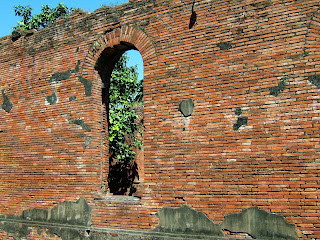To what degree should a manipulated image go into a fashion magazine?
When you see photos in magazine they are nearly always manipulated i.e. tampered with in some way. The most common way now days is photo shopping an image. Many people say that using Photoshop for photos in magazines shouldn't be allowed, because they photo shop it so much it changes the whole aspect of the image and masks up what the actual image is. It changes the whole outlook of the photo. The biggest problem with photo shopping an image now days is when they do it with models. They take out everything natural with the photo and crop and change it so it comes across that the person is just perfect. This has caused many problems, especially with young girls now days comparing them self's to these false images and taking drastic measures to look like them. Even though the photos aren't technically real.

The image above is showing a before and after of a male model. As soon as you look at the photo you can see that major changes have been made. His mouth has been re - aligned to the centre, his eyebrows have been narrowed down to a straighter and more precise line, his skin tone has ben lightened, his eye colour has been given brightened. Yes its the same person but its giving a completely unlikely and unreal photo of what he looks like. Its giving a false impression and deceiving us.
The image below is a simple example of what I mean by an unlikely photo with a woman. This photo has been photo shopped so the weight around her stomach looks more toned and the weight on her arms have been trimmed. This is giving out a false impression of what the woman actually looks like.

The link below shows to what extremes companies go to, to change the appearance of what someone looks like and what changes are made for them to be able to have the photo in there magazine. Her skin tone is change, she is reduced in weight, her colour change, and she is made to look more curvy and elegant than the original photo. But how does the contribute to the original question? "To what degree should a manipulated image go into a fashion magazine?" In my own opinion I think that any photos that have such large changing effects shouldn't be allowed. Small changes such as the skin is made more lighter to fit in with the background of the magazine page is ok. But changing things such as her weight and hair colour I believe is unacceptable. It makes us look at a photo that isn't true. But more importantly I believe it is unacceptable because it makes young woman and some men feel that they look wrong, and wont look "right" so to speak, until they look like the fake and unbelievable photos. Which is impossible because they aren't real.
As I said above this is the video of what companies will do to change a persons image, before allowing it into there magazines.
Time lapse of a model during photo shop changes:
http://www.youtube.com/watch?v=olPPOsV2wHQ
As you can see from above the main point I have talked about so far for the manipulation of photos is photo shop. But there are also many different ways that photos can be manipulated. Such other ways can be ones such as:
1. They go on drastic diets to change the way they look to fit the preference of the picture.
2. The amount of make up they put on before taking the picture also changes the way the picture can be performed. For example, putting on tonnes of make up can take the whole natural look away from the photo and can easily be seen as false. Also the shade or tone of the make up put on can change the feelings of the emotions put into the picture.
3.Putting certain objects into a picture can change the whole out look of a picture and give it a completely different meaning to what it is suppose to suggest.
4. The use of lights in photos can change the effect the picture has. For example if there is a slight shadow on one side of there face this would give more of an eerie feel and make you think there is a dark side to them or they have something to hide. But if there face is brightly lit this would just show how there face can become very radiant by the use of lights.
5. Another way of manipulating a photo is choosing certain models for certain pictures. This is counted as manipulating a photo because men and women will get turned down because they don't have the correct features, or the correct colour, or the correct shape. This is a form of manipulation.






